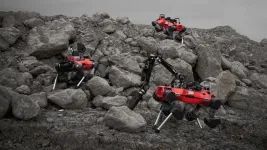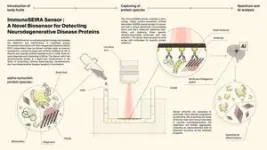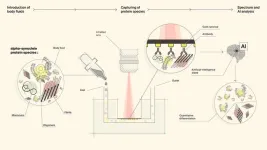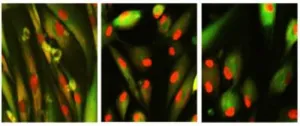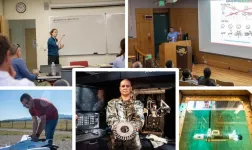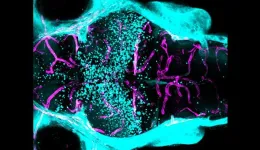(Press-News.org) On the Moon, there are raw materials that humanity could one day mine and use. Various space agencies, such as the European Space Agency (ESA), are already planning missions to better explore Earth’s satellite and find minerals. This calls for appropriate exploration vehicles. Swiss researchers led by ETH Zurich are now pursuing the idea of sending not just one solitary rover on an exploration tour, but rather an entire team of vehicles and flying devices that complement each other.
The researchers equipped three ANYmal – a type of legged robot developed at ETH – with a range of measuring and analysis instruments that would potentially make them suitable exploration devices in the future. They tested these robots on various terrains in Switzerland and at the European Space Resources Innovation Centre (ESRIC) in Luxembourg, where, a few months ago, the Swiss team won a European competition for lunar exploration robots together with colleagues from Germany. The competition involved finding and identifying minerals on a test site modelled after the surface of the Moon. In the latest issue of the journal Science Robotics, the scientists describe how they go about exploring an unknown terrain using a team of robots.
Insurance against failure
“Using multiple robots has two advantages,” explains Philip Arm, a doctoral student in the group led by ETH Professor Marco Hutter. “The individual robots can take on specialised tasks and perform them simultaneously. Moreover, thanks to its redundancy, a robot team is able to compensate for a teammate’s failure.” Redundancy in this case means that important measuring equipment is installed on several robots. In other words, redundancy and specialisation are opposing goals. “Getting the benefits of both is a matter of finding the right balance,” Arm says.
The researchers at ETH Zurich and the Universities of Basel, Bern and Zurich solved this problem by equipping two of the legged robots as specialists. One robot was programmed to be particularly good at mapping the terrain and classifying the geology. It used a laser scanner and several cameras – some of them capable of spectral analysis – to gather initial clues about the mineral composition of the rock. The other specialist robot was taught to precisely identify rocks using a Raman spectrometer and a microscopy camera.
The third robot was a generalist: it was able to both map the terrain and identify rocks, which meant that it had a broader range of tasks than the specialists. However, its equipment meant that it could perform these tasks with less precision. “This makes it possible to complete the mission should any one of the robots malfunction,” Arm says.
Combination is key
At the ESRIC and ESA Space Resources Challenge, the jury was particularly impressed that the researchers had built redundancy into their exploration system to make it resilient to potential failures. As a prize, the Swiss scientists and their colleagues from the FZI Research Center for Information Technology in Karlsruhe, were awarded a one-year research contract to further develop this technology. In addition to legged robots, this work will also involve robots with wheels, building on the FZI researchers’ experience with such robots.
“Legged robots like our ANYmal cope well in rocky and steep terrain, for example when it comes to climbing down into a crater,” explains Hendrik Kolvenbach, a senior scientist in Professor Hutter’s group. Robots with wheels are at a disadvantage in these kinds of conditions, but they can move faster on less challenging terrain. For a future mission, it would therefore make sense to combine robots that differ in terms of their mode of locomotion. Flying robots could also be added to the team.
The researchers also plan to make the robots more autonomous. Presently, all data from the robots flows into a control centre, where an operator assigns tasks to the individual robots. In the future, semi-autonomous robots could directly assign certain tasks to each other, with control and intervention options for the operator.
###
Video: https://youtu.be/bqwbQzVrzkQ
(Video: ETH Zurich)
This video is currently unlisted on Youtube. Link not to be published until the embargo expires (12 July 2023 2 p.m. ET)
END
Robot team on lunar exploration tour
2023-07-12
ELSE PRESS RELEASES FROM THIS DATE:
How larger body sizes helped the colonizers of New Zealand
2023-07-12
COLUMBUS, Ohio – For the first time, researchers have developed a model to estimate how much energy the original colonizers of New Zealand expended to maintain their body temperatures on the cold, harrowing ocean journey from Southeast Asia.
Results showed that people making the first voyages from Tahiti to New Zealand in sailing canoes would expend 3.3 to 4.8 times more energy on thermoregulation – the technical term for maintaining body temperature - than those making a trip of similar length to Hawaii.
The ocean route to New Zealand required much more energy for thermoregulation ...
Could AI-powered robot “companions” combat human loneliness?
2023-07-12
AUKLAND, NZ and DURHAM, N.C. – Companion robots enhanced with artificial intelligence may one day help alleviate the loneliness epidemic, suggests a new report from researchers at Auckland, Duke, and Cornell Universities.
Their report, appearing in the July 12 issue of Science Robotics, maps some of the ethical considerations for governments, policy makers, technologists, and clinicians, and urges stakeholders to come together to rapidly develop guidelines for trust, agency, engagement, and real-world efficacy.
It also proposes a new way to measure whether a companion robot is helping someone.
“Right now, all the evidence ...
Those who are smarter live longer
2023-07-12
Cognitive abilities not only vary among different species but also among individuals within the same species. It is expected that smarter individuals live longer, as they are likely to make better decisions, regarding habitat and food selection, predator avoidance, and infant care. To investigate the factors influencing life expectancy of wild gray mouse lemurs, researchers from the German Primate Center conducted a long-term study in Madagascar. They administered four different cognitive tests and two personality tests to 198 animals, while also measuring their weight and tracking their survival over several years. ...
Secrets of Egyptian painters revealed by chemistry
2023-07-12
Within the scope of a vast research program undertaken in coordination with the Egyptian Ministry of Antiquities and the University of Liège, an international team—including scientists from the CNRS, Sorbonne University, and Université Grenoble Alpes—has revealed the artistic license exercised in two ancient Egyptian funerary paintings (dating to ~1,400 and ~1,200 BCE, respectively), as evident in newly discovered details invisible to the naked eye. Their findings are published in PLOS ONE (12 July).
The language of ancient ...
A novel biosensor for detecting neurogenerative disease proteins
2023-07-12
By combining multiple advanced technologies into a single system, EPFL researchers have made a significant step forward in diagnosing neurodegenerative diseases (NDDs) such as Parkinson's disease (PD) and Alzheimer's disease (AD). This novel device is known as the ImmunoSEIRA sensor, a biosensing technology that enables the detection and identification of misfolded protein biomarkers associated with NDDs. The research, published today in Science Advances, also harnesses the power of artificial intelligence (AI) by employing neural networks to quantify disease ...
Eliminating public health scourge can also benefit agriculture
2023-07-12
Schistosomiasis, a parasitic disease that causes organ damage and death, affected more than 250 million people worldwide in 2021, according to the World Health Organization.
One of the world’s most burdensome neglected tropical diseases, schistosomiasis occurs when worms are transmitted from freshwater snails to humans. The snails thrive in water with plants and algae that proliferate in areas of agricultural runoff containing fertilizer. People become infected during routine activities in infested water.
Researchers from the University of Notre Dame, in a study recently published in Nature, found that removing invasive vegetation at water access points in and around several ...
Rosé renaissance: Spanish study uncorks ultrasound for superior wine quality
2023-07-12
Since the International Organisation of Vine and Wine (OIV) approved the use of ultrasound to promote the extraction of grape compounds back in 2019, its application for obtaining superior red wines has been studied extensively.
Now researchers are turning their attention to rosé – an expanding market which has seen strong growth over the past 15 years. A team from the University of Castilla-La Mancha and the University of Murcia in Spain used high-power ultrasound technology to treat Monastrell crushed grapes – a process known as sonication ...
NEW STUDY: Discovery of chemical means to reverse aging and restore cellular function
2023-07-12
On July 12, 2023, a new research paper was published in Aging, titled, “Chemically induced reprogramming to reverse cellular aging.”
BUFFALO, NY- July 12, 2023 – In a groundbreaking study, researchers have unlocked a new frontier in the fight against aging and age-related diseases. The study, conducted by a team of scientists at Harvard Medical School, has published the first chemical approach to reprogram cells to a younger state. Previously, this was only achievable using a powerful gene ...
Empowering student ideas: NPS introduces the Naval Innovation Exchange
2023-07-12
The Naval Innovation Center (NIC) at the Naval Postgraduate School (NPS) in Monterey, Calif., is part of the Secretary of the Navy’s initiative to leverage the power of American innovation for national security. Integral to the function of the NIC is the Naval Innovation Exchange (NIX), a new program that organizes and empowers multidisciplinary teams of NPS students and faculty focused on developing prototype research solutions.
While in its early stages, the NIC at NPS will leverage and empower ...
Researchers uncover signal needed for blood-brain barrier
2023-07-12
At a glance:
Working with mice and zebrafish, researchers identify a gene, expressed in neurons, that produces a signal needed for development and maintenance of the blood-brain barrier.
When mutated, the gene makes certain regions of the blood-brain barrier more permeable.
The findings could help scientists control the blood-brain barrier — important for delivering drugs into the central nervous system or countering damage from neurodegenerative disease
What makes the vital layer of protective cells around the brain and spinal cord — ...
